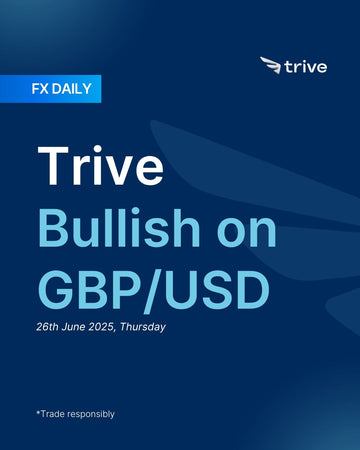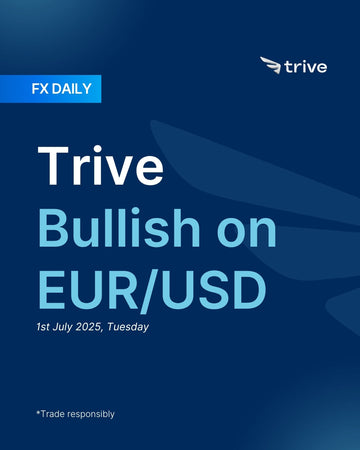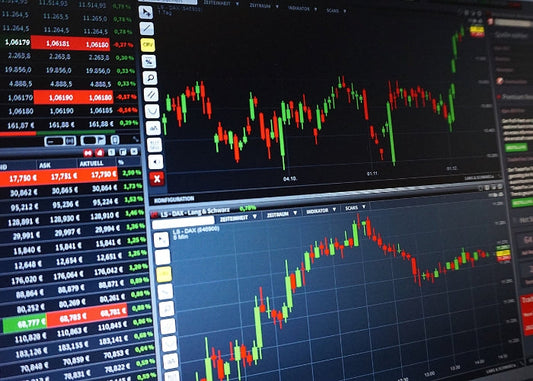Great insight!
FX Weekly: Trive’s Week Ahead Views

This week highlights include the US Nonfarm Payrolls report, ISM Manufacturing and Services PMIs, EZ CPI, China PMIs, Swiss CPI and the Japanese Tankan Survey. Note, NFP a day earlier than usual due to US Independence Day.
Monday
Focus on Asia kicks off the week with Japan’s May industrial production and China’s official PMIs for June, setting the tone amid trade recalibrations. Japan’s output data comes against the backdrop of slowing external demand, and economists will parse for signs of rebound in auto and semiconductor-linked production. In China, the NBS manufacturing PMI is seen inching up to 49.8 from 49.5, still in contraction, while the non-manufacturing gauge is expected to remain broadly stable. Though a firm market consensus is absent, ING and other desks stress the importance of the new export orders sub-index, given the recent policy easing and tariff reprieves announced in June. Stabilization in these PMIs would hint that stimulus measures are beginning to show traction, even if a broad recovery remains tentative.
Europe’s docket includes German retail sales and flash CPI prints from Germany and Italy. Both are crucial inputs into Tuesday’s eurozone-wide HICP release. Softness in German retail sales would reinforce concerns that high rates and inflationary fatigue are weighing on consumption across the bloc. Italian and German CPI data will offer the last clues ahead of Tuesday’s ECB-relevant inflation numbers.
Tuesday
A packed session brings critical readings from Japan, China, the euro area, and the US. In Japan, the Bank of Japan’s Q2 Tankan survey is expected to reflect modest deterioration in sentiment among large manufacturers—consensus sees the diffusion index slipping to +10 from +12. This marks the first major survey since Washington’s auto tariff announcement, with Japanese automakers flagged as especially vulnerable. Analysts point to the dual hit from weaker external demand and policy overhangs. Non-manufacturing sentiment is expected to hold up on the strength of domestic services, supported by stable employment and resilient household spending.
In China, the Caixin Manufacturing PMI final print will cross alongside its global peers. While the official PMI shows tentative stabilization, the Caixin series—more focused on smaller and private firms—could reveal whether the rebound narrative has legs.
Across Europe, attention turns squarely to inflation. Eurozone flash HICP is expected to show annual headline inflation holding at 1.9%, with core slipping to 2.3% from 2.4%. Investec expects a 0.1pp fall across both, forecasting 1.8% headline and 2.2% core, driven by softer services and food prices. However, energy and goods inflation may partly offset these effects. Notably, French and Spanish CPI came in marginally firmer than expected, adding mild upside risk. Markets are watching whether disinflation momentum warrants more ECB easing. The EUR’s recent appreciation adds a deflationary impulse, potentially nudging market bets on a second rate cut—currently not fully priced until February 2026—closer. But any impact may be superseded by trade developments, especially with US Commerce Secretary Lutnick hinting a US-EU deal could be finalized by week’s end.
In the US, the June ISM Manufacturing PMI will offer another read on industrial momentum amid tariff-driven cost pressures. The flash PMI remained at 52.0, with notable strength in output and employment, and inventory-building hitting a three-year high. However, S&P flagged that much of this build-up may be precautionary—linked to tariffs and supply fears—raising questions about its sustainability. Export orders fell, and both input and output price indices surged, with many firms passing costs downstream. While the data points to firm near-term output, persistent cost pressures and softening exports could weigh on future prints. For the Fed, inflation dynamics—particularly those sourced from tariffs—remain key; Tuesday’s ISM print may reinforce the “wait and see” posture.
Wednesday
The midweek session brings Polish monetary policy, US ADP private payrolls, and European labor market data. The National Bank of Poland is widely expected to keep its benchmark rate unchanged, with Governor Glapiński having repeatedly emphasized caution given inflation’s volatile trajectory and regional geopolitical uncertainties.
In the US, June’s ADP employment change will serve as the unofficial first look at Friday’s NFP-equivalent. While ADP has diverged from BLS figures this year, trends in hiring and wage growth still shape market bias. Meanwhile, Challenger job cuts data will be eyed for signals on corporate cost-cutting amid tariff-related input pressures and Fed policy uncertainty.
In the eurozone, unemployment data for May will provide further context to Tuesday’s CPI print. The jobless rate has been gradually drifting lower this year, but soft retail, industrial, and services momentum may eventually weigh on labor markets.
Thursday
In Switzerland, June CPI takes on added weight after May’s negative reading. The SNB cut its policy rate to 0.00% in June, with Q2 inflation forecasts trimmed to 0.0%. With May at -0.1% and April flat, the SNB needs a positive June print to validate its forecast and to argue that a floor has been reached. Analysts note upside risks from recent energy price gains and stronger French/Spanish inflation, although headline momentum remains tepid.
In the US, June’s nonfarm payrolls headline release—brought forward due to the holiday—will dominate. Consensus expects 129,000 jobs added, modestly below the three-month average of 135,000. Unemployment is seen steady at 4.2%, though the Fed projects a rise to 4.5% by year-end. Average hourly earnings are expected to cool to 0.3% M/M, with workweek hours unchanged. Fed Chair Powell has described the labor market as “solid,” with slow, non-alarming cooling. Most Fed officials have echoed that view, reiterating that while job softness would justify cuts, current levels do not. Instead, attention has shifted to tariff-induced inflation. Fed’s Collins, for instance, warned core PCE could top 3% by year-end. Nevertheless, any negative surprise in jobs data may quickly be politicized—US President Trump has recently used both strong and weak prints to justify easing demands, sharpening his rhetoric ahead of the election cycle.
Also Thursday, the ISM Services PMI will be released, with consensus looking for a rebound into expansion at 50.3 from 49.9. Flash services PMI had dipped to 53.1 from 53.7, showing robust domestic demand but declining export orders. Backlogs surged, driving hiring to a five-month high. Tariff-related costs remain a key issue, with input prices elevated due to fuel, wages, and financing. Confidence, however, dipped due to uncertainty over government policy. For the Fed, sticky services inflation keeps policy levers on hold—even modest expansion in Thursday’s ISM print may be seen as evidence of demand resilience.
The US will also publish May factory orders, which are expected to reinforce the tariff-driven reshuffling in inventories and capital goods momentum.
Friday
A lighter session wraps the week amid early July 4th closures. Switzerland’s June unemployment rate, German May industrial orders, and eurozone May PPI round out the docket. Swiss labor market stability will affirm domestic economic resilience post-SNB cuts. Germany’s factory order data is likely to remain volatile, shaped by weak global demand and export uncertainty, particularly toward China and the US. Eurozone producer prices are expected to remain subdued, with disinflationary trends evident in recent months. The data will further inform ECB watchers as to the balance between service-led inflation and weak pipeline pressures.
Markets will remain tuned to political headlines around US-EU trade negotiations, possible clarifications on the China deal’s Geneva implementation framework, and any renewed friction on the Canada digital services tax saga. With the Fed focused on inflation and the White House ramping up its trade diplomacy, macro signals this week will feed into both policy and political narratives as July begins.
Disclaimer
This material is provided for informational purposes only and does not constitute financial, investment, or other advice. The opinions expressed in this material are those of the author and do not necessarily reflect the views of Trive International. No opinion contained in this material constitutes a recommendation by Trive International or its author regarding any particular investment, transaction, or investment strategy. This material should not be relied upon in making any investment decision.
The information provided does not consider the individual investment objectives, financial situation, or needs of any specific investor. Investors should seek independent financial advice tailored to their individual circumstances before making any investment decisions. Trive International shall not be liable for any loss, damage, or injury arising directly or indirectly from the use of this information or from any action or decision taken as a result of using this material.
Trive International may or may not have a financial interest in the companies or securities mentioned. The value of investments may fluctuate, and investors may not get back the amount they originally invested. Past performance is not indicative of future results.
For more information about Trive International, please visit http://trive.com/int
Additional Information
Investing involves risk, including the potential loss of principal. Diversification and asset allocation strategies do not ensure a profit or guarantee against loss. The content in this material is subject to change without notice and may become outdated or inaccurate over time. Trive International does not undertake any obligation to update the information in this material.
By accessing this material, you acknowledge and agree to the terms of this disclaimer. If you do not agree with these terms, please refrain from using this information.
Home
Trive
TriveHub





1 comment